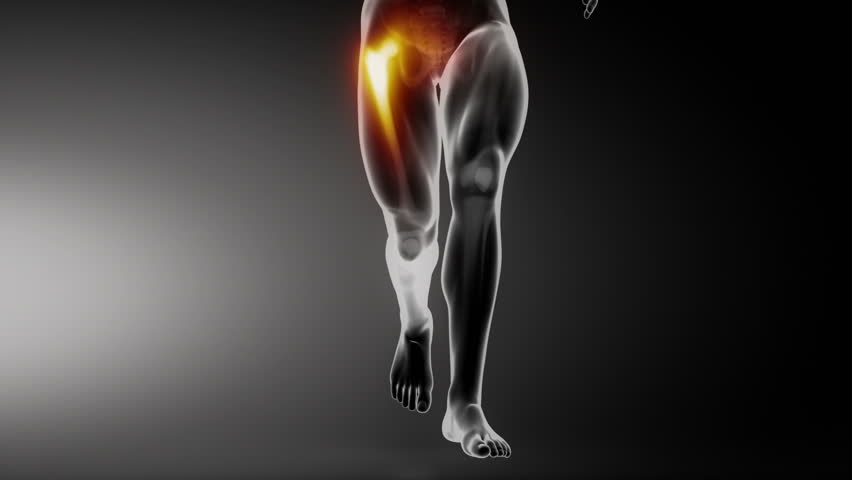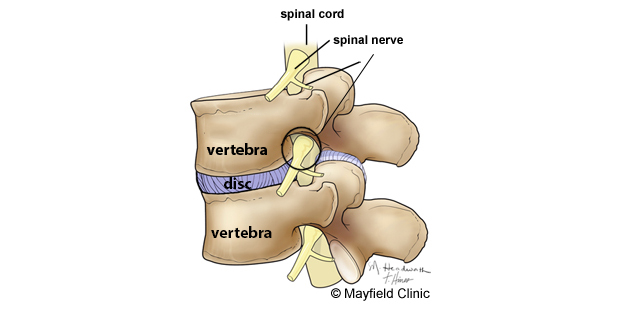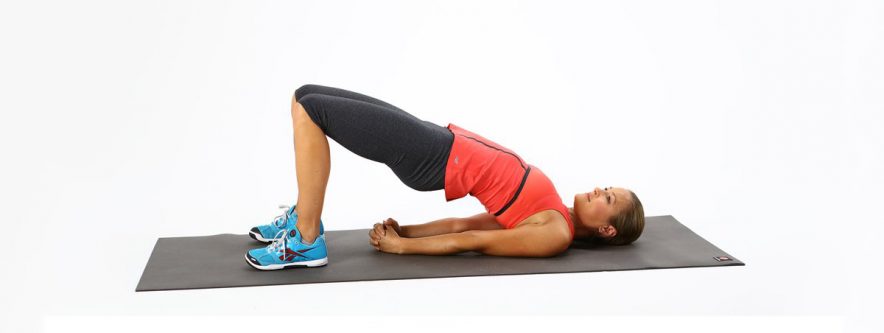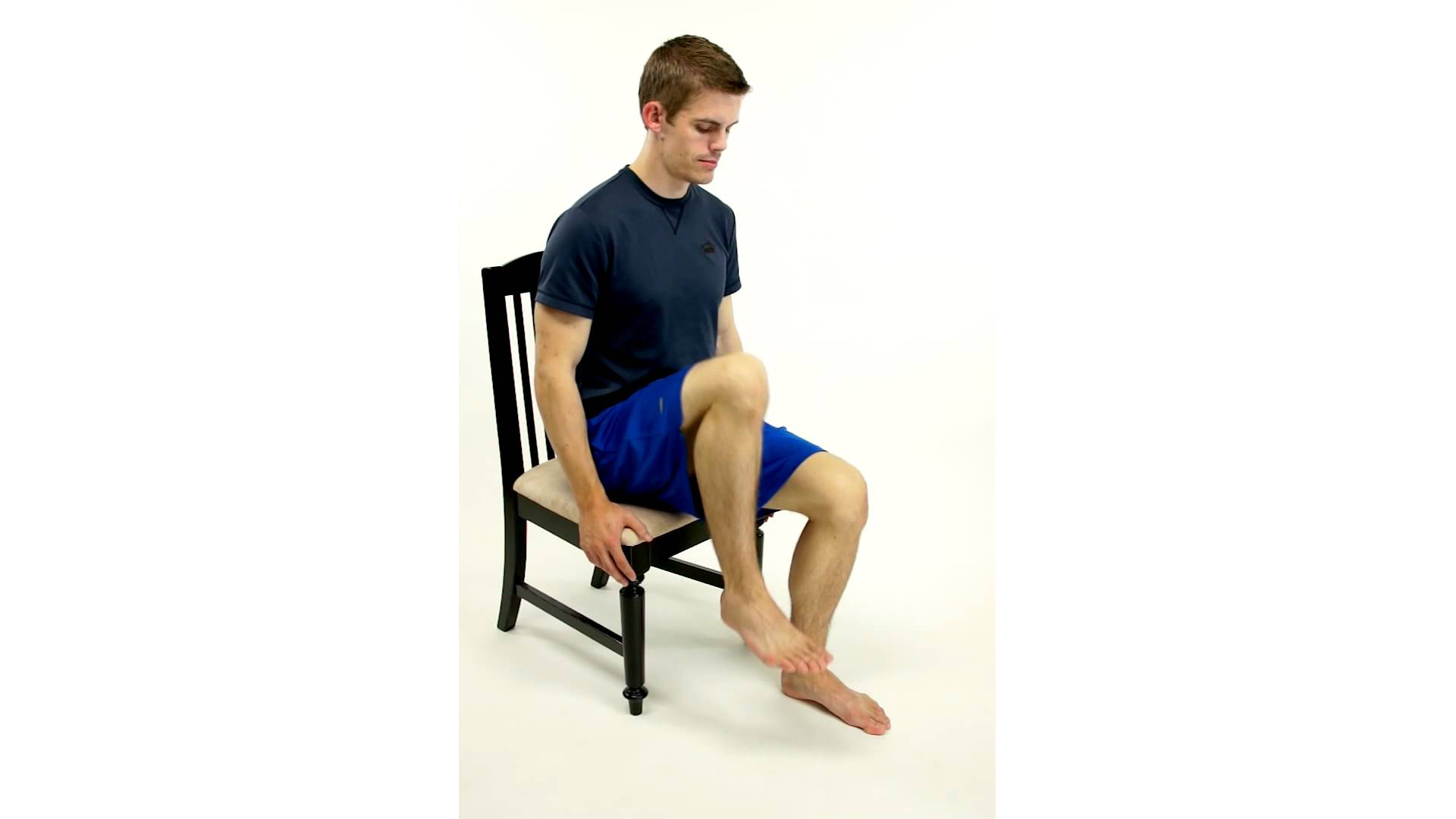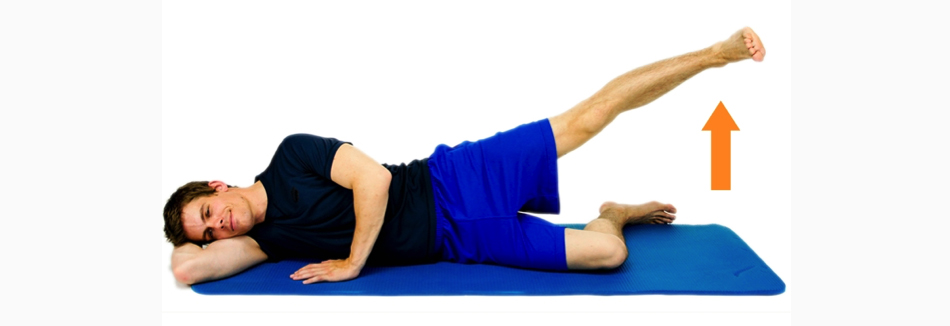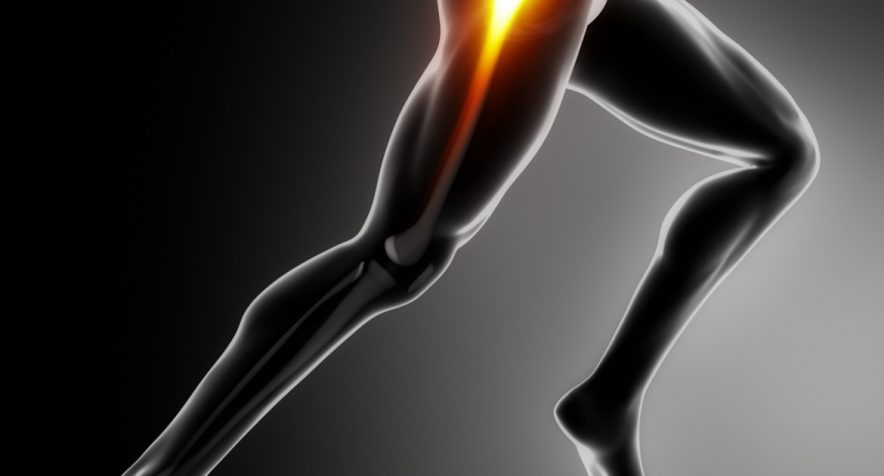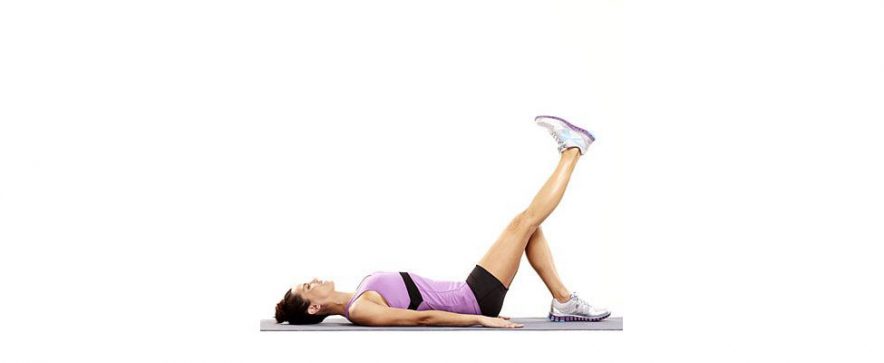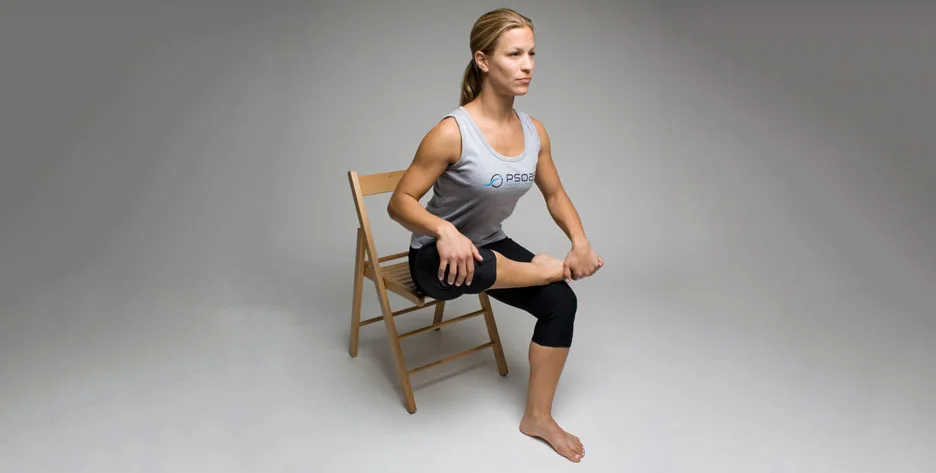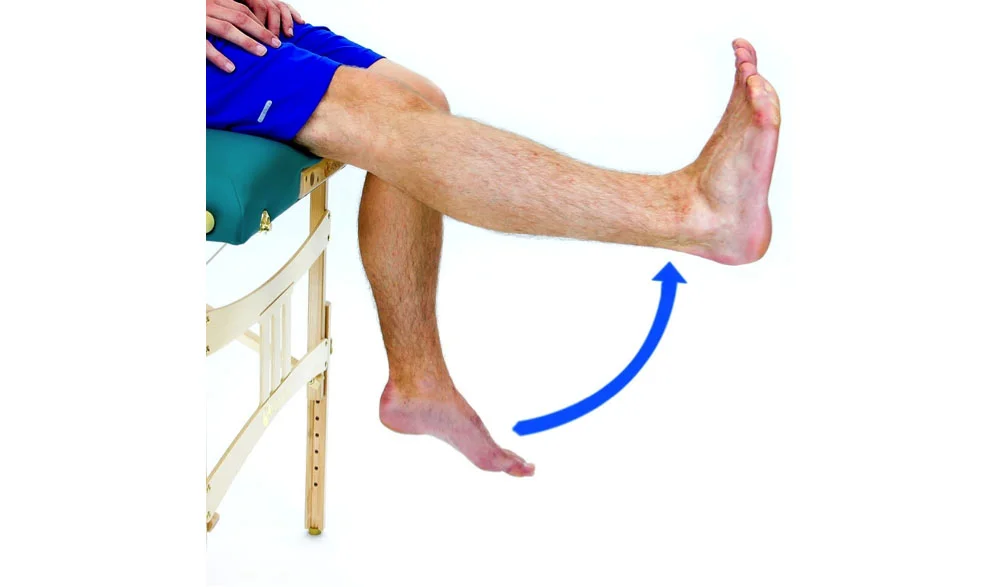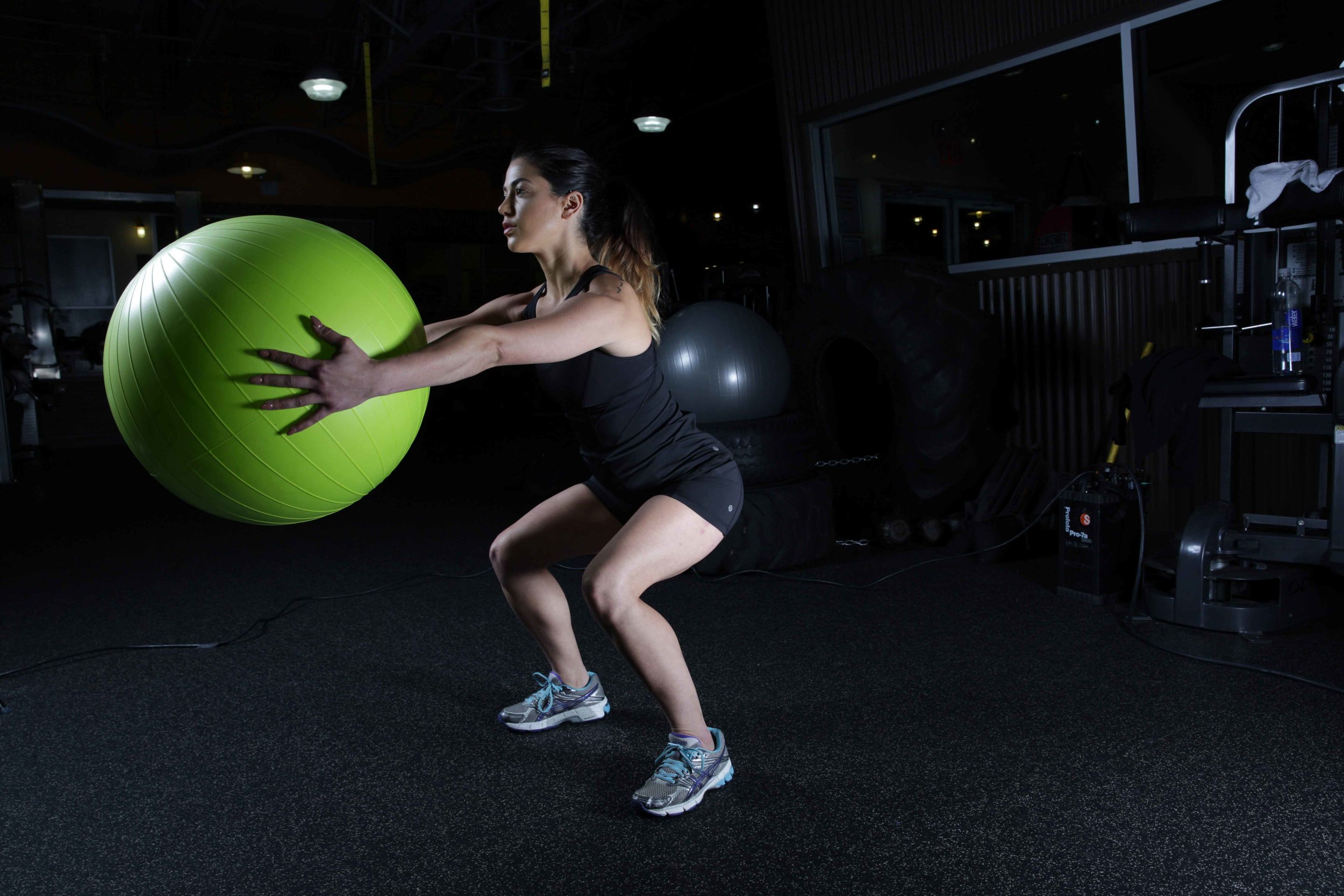
Brooklyn Physical Therapy News- Evolve NY
How Can Physical Therapy Help My Plantar Fasciitis?
What is the plantar fascia?
The plantar fascia is a thick band of connective tissue that runs from the lower surface of the heel to the beginning of the toes. This fibrous band of tissue is placed under tension during walking and other activities in which you place weight onto the feet. This tension creates support and stabilization of the arch of foot, which will help stabilize the entire lower extremity during these types of activities…
By Nick Mazzone, PT, DPT, CSCS
What is the plantar fascia?
The plantar fascia is a thick band of connective tissue that runs from the lower surface of the heel to the beginning of the toes. This fibrous band of tissue is placed under tension during walking and other activities in which you place weight onto the feet. This tension creates support and stabilization of the arch of foot, which will help stabilize the entire lower extremity during these types of activities.
What causes this structure to become inflamed?
While the exact mechanisms behind the causes of plantar fasciitis are not completely understood, the condition has been correlated with some mechanical issues at the foot and ankle. One of the more common impairments associated with this condition is inadequate dorsiflexion of the foot. Dorsiflexion is the movement performed when the top surface of the foot comes closer to the front of the leg.
Another impairment that is commonly associated with plantar fasciitis is weakness of the posterior tibialis muscle. This muscle helps to increase arch height during activities in which weight is placed on the feet.
This condition can also be considered an overuse injury. For instance, a running athlete may progress their running program too quickly without allowing their body to adapt. This can cause inflammation and pain in the plantar fascia.
What can PT do to help?
Your physical therapist will create a specific foot physical therapy treatment plan tailored to your needs and impairments. Most commonly, the treatment will consist of mobility drills and functional stabilization techniques to help support the arch of the foot. These exercises are more effective when performed with weight on the legs in a standing position, as this is more closely related to the way in which these structures actually function in the real world. Your program may start more conservatively depending on your pain and activity tolerance.
The ultimate goal of the treatment is to progressively load these structures so that they become adapted to increased stress. This will ensure that the plantar fascia can handle the demands placed on it during our daily endeavors, whatever they may be. In some cases, a physical therapist will recommend orthotics to help provide support to the arch of the foot.
Click here for more information about physical therapy for plantar fasciitis
Check out this video depicting 3 simple exercises that can be performed to help improve your plantar fasciitis:
Nick Mazzone received his Doctorate in Physical Therapy from Stony Brook University. He has a strong background in strength and conditioning and aims to bridge the gap between strength training and physical therapy. Nick believes that a lifestyle centered around physical fitness and mental well-being are vital to one’s successes and happiness. For this reason, he educates his patients on pain science and helps empower them and motivate them to reach their goals every day. You can find him at Evolve Physical Therapy in Mill Basin, Brooklyn. To view some of his other content, visit drnickmazzonedpt.wordpress.com.
Resources:
Picture of painful foot retrieved from https://www.tcpaindoctor.com/can-prp-help-treat-plantar-fasciitis/
Picture of plantar fascia function during weight bearing retrieved from https://painphysiotherapist.com/2016/05/25/plantar-fascia-rupture/
Picture depicting dorsiflexion of ankle retrieved from http://www.militarydisabilitymadeeasy.com/
Picture of posterior tibialis retrieved from https://www.fixpodiatry.com.au/podiatry-conditions/tibialis-posterior-tendinopathy/
Picture of collapsed arch retrieved from https://www.epainassist.com/sports-injuries/foot-and-heel-injuries/flat-feet-or-pes-planus-or-fallen-arches
Photo of orthotic placement retrieved from https://bestwalkingfeet.com/good-shoes-for-flat-feet/insoles-and-inserts/
Wheeless' Textbook of Orthopaedics. (n.d.). Retrieved from http://www.wheelessonline.com/ortho/Plantar_fascia
What is the Rotator Cuff and What Does It Do?
What is the rotator cuff?
The rotator cuff is the name given to the group of 4 muscles that originate from different positions on the shoulder blade and connect to the humerus (upper arm). These muscles all work together to ensure stability of the shoulder joint during movement (dynamic stability). When isolated, each of these muscles acts on the humerus and moves the shoulder joint in different directions…
By Nick Mazzone, PT, DPT, CSCS
What is the rotator cuff?
The rotator cuff is the name given to the group of 4 muscles that originate from different positions on the shoulder blade and connect to the humerus (upper arm). These muscles all work together to ensure stability of the shoulder joint during movement (dynamic stability). When isolated, each of these muscles acts on the humerus and moves the shoulder joint in different directions. These muscles are named supraspinatus, infraspinatus, teres minor, and subscapularis.
Why do we need this dynamic stability?
As we move the arm, these rotator cuff muscles will contract together to help keep the humerus centered nicely inside the cup of the shoulder joint (think ball and socket). If there is an asymmetry in strength among these muscles, the positioning of the shoulder inside the socket may be altered while you move your arm. Over time, this can cause irritation of other tendons, ligaments, and bone in the shoulder region. Some of the common diagnoses associated with rotator cuff muscle weakness are shoulder impingement syndrome and non-traumatic rotator cuff tears.
What happens if the rotator cuff is torn?
The most commonly torn rotator cuff muscle is the supraspinatus. People with supraspinatus tears typically have trouble elevating the arm and may exhibit a compensatory shrugging of the shoulder in order to assist in raising the arm.
If a partial tear is present, the muscle and tendon have the ability to heal without surgical intervention. In order for proper healing to occur, we must provide an ideal environment for the muscle and tendon to recover. This would include intervention aimed at decompressing the region where the muscle attaches to the humerus, which would be achieved through range of motion exercise and strengthening of all 4 rotator cuff muscles to help produce more efficient movement of the shoulder (to put it briefly).
If a complete tear is present, there are two options that one may follow. The non-surgical route would include strengthening other muscles around the shoulder joint that will help to compensate and act as a substitute for the torn rotator cuff muscle. Fortunately, the shoulder joint was designed to be able to withstand this type of injury and with the right rehab protocol, may return to normal functioning. In cases where this method does not help, surgical intervention is typically indicated. After surgery, patients will be sent to a physical therapist in order to help them return to their prior level of functioning.
What does physical therapy typically consist of for rotator cuff injuries?
The plan of care will consist of manual stretching and soft tissue mobilization of tense muscles, specific strength and stability exercise to improve the function of the shoulder, range of motion exercises to help normalize joint movement, and movement re-education to ensure pain-free use of the arm.
Click here to find out more information about physical therapy for rotator cuff injuries
Check out this brief video for 3 exercises that will strengthen the rotator cuff muscles:
Nick Mazzone received his Doctorate in Physical Therapy from Stony Brook University. He has a strong background in strength and conditioning and aims to bridge the gap between strength training and physical therapy. Nick believes that a lifestyle centered around physical fitness and mental well-being are vital to one’s successes and happiness. For this reason, he educates his patients on pain science and helps empower them and motivate them to reach their goals every day. You can find him at Evolve Physical Therapy in Mill Basin, Brooklyn. To view some of his other content, visit drnickmazzonedpt.wordpress.com.
Resources
Photo depicting widespread shoulder pain (top photo) retrieved from https://www.myanthemhealth.com/blog/shoulder-paincould-it-be-my-rotator-cuff
Photo depicting different muscles of the rotator cuff retrieved from https://www.slideshare.net/prkhuman/shoulder-impingement-syndrome-24685952
Photo depicting a rotator cuff tear retrieved from https://www.vivehealth.com/blogs/resources/rotator-cuff-tear
Photo depicting the compensatory shoulder shrug during shoulder elevation retrieved from https://healtheappointments.com/chapter-16-the-musculoskeletal-system-essays/5/
How Can PT Help My Carpal Tunnel Syndrome?
What is carpal tunnel syndrome?
The carpal tunnel is the space formed by the bones of the wrist and hand that allows passage of the median nerve along with tendons of muscles that move the joints of the hand. This space is typically about an inch wide, however it can be made narrower in the presence of irritation and swelling of any of these structures.
By Nick Mazzone PT, DPT, CSCS
What is carpal tunnel syndrome?
The carpal tunnel is the space formed by the bones of the wrist and hand that allows passage of the median nerve along with tendons of muscles that move the joints of the hand. This space is typically about an inch wide, however it can be made narrower in the presence of irritation and swelling of any of these structures. Narrowing of this passageway can lead to pressure on the median nerve, which may lead to symptoms such as tingling, burning, weakness, and pain in the hand and fingers.
How do I know it is carpal tunnel syndrome?
Symptoms from carpal tunnel syndrome such as numbness and tingling typically present themselves at the thumb, index finger, middle finger, and half of the ring finger. This is because sensation to these areas is supplied by the median nerve. If the median nerve is being compressed, these areas may become numb or painful. You may also find weakness of the muscles that move the thumb, first two fingers, and wrist. The picture below shows what the hand may look like when a person with long-standing carpal tunnel syndrome attempts to make a fist. It is known as the “Hand of Benediction Sign”.
What is the traditional treatment for carpal tunnel?
Typically, people suffering with the symptoms of carpal tunnel syndrome receive anti-inflammatory medications or are suggested to have surgery. This surgery involves a “release” of the transverse carpal ligament, meaning that the surgeon cuts this ligament to help decrease pressure on the tunnel and, therefore, the median nerve. The issue is that this does not always solve the problem. If the tendons are still inflamed and swollen, we may still be feeling these symptoms after the post-surgical healing process is complete. For this reason, physical therapy should be a patient’s first option. Many people find that PT alone helps them return to normal, pain-free functioning during daily tasks.
How do we improve these symptoms in PT?
The symptoms from carpal tunnel syndrome can be resolved by decreasing pressure on the median nerve at the level of the wrist and hand. This can be accomplished by improving flexibility of the muscles and connective tissues at the wrist and hand, especially those on the front of the forearm. Your physical therapist will perform mobilization and stretching techniques, postural training and education, nerve gliding techniques, and soft tissue mobilization. Once the tissues are of proper flexibility, we must ensure that the muscles surrounding the hand and wrist are strong to help stabilize the joints. A home exercise program with specific exercises to help your condition will also be prescribed.
Check out the video below for a demonstration on how to perform median nerve gliding to help alleviate symptoms of carpal tunnel syndrome:
Click here to find out more information about physical therapy for carpal tunnel syndrome
Resources:
Our knowledge of orthopedics. Your best health. (n.d.). Retrieved April 05, 2018, from https://orthoinfo.aaos.org/en/diseases--conditions/carpal-tunnel-syndrome/
“Hand of Benediction” photo retrieved from http://slideplayer.com/slide/9418409/
Photo depicting carpal tunnel release surgery retrieved from http://www.korshjafarniamd.com/treatment/minimally-invasive/endoscopic-carpal-tunnel-release.php
Photo depicting median nerve compression retrieved from http://nursinglink.monster.com/training/articles/814-carpal-tunnel-syndrome
Photo used at top of page depicting painful wrist retrieved from http://www.pipmchealth.com/conditions/carpal-tunnel-syndrome/
“Tips for preventing and treating carpal tunnel syndrome”photo retrieved from https://www.mispinerelief.com/blog/carpal-tunnel-treatment-and-preventing-for-carpal-tunnel-syndrome/
Nick Mazzone received his Doctorate in Physical Therapy from Stony Brook University. He has a strong background in strength and conditioning and aims to bridge the gap between strength training and physical therapy. Nick believes that a lifestyle centered around physical fitness and mental well-being are vital to one’s successes and happiness. For this reason, he educates his patients on pain science and helps empower them and motivate them to reach their goals every day. You can find him at Evolve Physical Therapy in Mill Basin, Brooklyn. To view some of his other content, visit drnickmazzonedpt.wordpress.com.
How Can PT Help My Spinal Stenosis?
What is Spinal Stenosis?
Spinal stenosis is one of the most commonly diagnosed conditions that affects the lumbar spine (lower back). It is common for people with stenosis to feel tightness and pain that radiates from the low back and buttocks down into both legs.
It is estimated that only about 5% of people with spinal disorders actually require surgery (Eidelson, 2018). So, what are the other 95% of people expected to do? This is where physical therapy comes into play. There are many methods your PT will use in order to help address the issue causing your pain and discomfort.
By Nick Mazzone, PT, DPT, CSCS
Spinal stenosis is one of the most commonly diagnosed conditions that affects the lumbar spine (lower back). It is common for people with stenosis to feel tightness and pain that radiates from the low back and buttocks down into both legs.
It is estimated that only about 5% of people with spinal disorders actually require surgery (Eidelson, 2018). So, what are the other 95% of people expected to do? This is where physical therapy comes into play. There are many methods your PT will use in order to help address the issue causing your pain and discomfort. This includes but is not limited to therapeutic exercise, soft tissue mobilization, manual stretching of the hips and spine, and postural re-education.
What is spinal stenosis of the lumbar region?
As you can see from the picture above, stenosis of the spine involves a narrowing of the canal in which the spinal cord sits. This leads to increased pressure on the spinal cord as well as the nerves that branch from it. This is the reason why people feel pain in the buttocks and legs; the region of pain stems from a specific section of the spinal cord that is under pressure. For this reason, two people with the same condition will present with different symptoms.
How can physical therapy help with this problem?
The treatment plan will be specifically tailored to each patient with stenosis. The main objective is to help decompress the spinal cord and its nerve branches by using techniques that create more space in the spinal canal. Bending backward, also known as extension of the lumbar spine, will decrease the space in the spinal canal due to the way the joints of the spine are oriented. This may increase pain and symptoms in a person with spinal stenosis. For this reason, the treatment plan will be focused on utilizing and improving spinal flexion, more commonly known as bending forward. This will help to widen the canal and decompress the inflamed structures, effectively providing relief of symptoms.
A comprehensive treatment plan will help you find positions of maximal comfort and give you more drug-free and surgery-free options for taking care of your lumbar spine and preventing pain in the future.
Please check out this brief video that provides 3 simple exercises to help decrease symptoms due to lumbar spinal stenosis, or click here to find out more information about physical therapy for spinal stenosis.
Resources
Eidelson, S. G., & An, H. S. (February 2018). Spinal Stenosis Center | Lumbar, Cervical, Symptoms, Exercise, Surgery. Retrieved March 18, 2018, from https://www.spineuniverse.com/conditions/spinal-stenosis
Picture of person with low back pain retrieved from http://www.omegapainclinic.com/spinal-stenosis-pain-treatment-utah
Pictures of stenosis in lumbar region retrieved from https://www.spineuniverse.com/conditions/spinal-stenosis
Nick Mazzone received his doctorate in Physical Therapy from Stony Brook University. He has a strong background in strength and conditioning and aims to bridge the gap between strength training and physical therapy. Nick believes that a lifestyle centered around physical fitness and mental well-being are vital to one’s successes and happiness. For this reason, he educates his patients on pain science and helps empower them and motivate them to reach their goals every day. You can find him at Evolve Physical Therapy in Mill Basin, Brooklyn.
What Does Foam Rolling Do for Me?
Foam Rolling has become one of the more popular health and fitness topics over the past few years or so. These tools can be found in many different shapes, sizes, and colors with varying textures and firmness to fit everybody’s apparent need. If you google this, you will find claims that foam rolling can help you improve range of motion, muscle strength and performance, and decrease pain…
By Nick Mazzone, PT, DPT, CSCS
Foam Rolling has become one of the more popular health and fitness topics over the past few years or so. These tools can be found in many different shapes, sizes, and colors with varying textures and firmness to fit everybody’s apparent need. If you google this, you will find claims that foam rolling can help you improve range of motion, muscle strength and performance, and decrease pain. It is also often used as part of a warm-up and cool-down within an exercise program.
Who do I believe?
Well, unfortunately there are very few studies on foam rolling and its effects on our muscles and connective tissues. The following bullet points can be used as a summary of the current body of research on this topic:
Positive Effects of Using a Foam Roller
· Increased blood flow
· Increased tissue temperature
· Better short-term improvements in range of motion versus static or dynamic stretching
· Decreased sensation of pain
What Foam Rolling Will NOT do for You
· Increase strength or power output
· Give lasting improvements in range of motion when used as a stand-alone treatment
· Lead to complete resolution of pain/symptoms when used as a stand-alone treatment
Let’s Discuss these findings…
As you can see, there are some benefits to using a foam roller, however I feel it is important that we clear up some of the common misconceptions on the topic…
Many people who use a foam roller use it in isolation as a method of improving their mobility. I understand why people want this to be true; foam rolling is much easier and less strenuous than stretching. Unfortunately, you will not receive lasting effects from foam rolling alone. While foam rolling will only provide temporary improvements in range of motion, we can take advantage of this temporary improvement by proceeding to perform static or dynamic stretching. With consistency, this can help to improve range of motion on a more permanent basis (although more studies are needed on this topic).
There is also no evidence that foam rolling increases strength or explosiveness during your workout, however one may argue that by utilizing a foam roller you are increasing blood flow to the area, and therefore, helping to facilitate contraction of specific muscles during exercise.
Foam Rolling may also help decrease pain by working to desensitize the area through repetitive stimulation and can help promote tissue healing by improving local blood flow.
How do you suggest I use the foam roller in my daily life?
· In conjunction with a stretching program for improving range of motion
· As part of a warmup routine, especially for activities that have high mobility requirements
· As an alternative to pain killers for temporary pain relief
· As a method of soothing sore, painful muscles after a physically demanding workout
Check out this video for a brief introduction on how to use a foam roller:
For more information or any questions, give us a call at 718-258-3300 or contact us today!
Resources:
Su, H., Chang, N., Wu, W., Guo, L., & Chu, I. (2017). Acute Effects of Foam Rolling, Static Stretching, and Dynamic Stretching During Warm-ups on Muscular Flexibility and Strength in Young Adults. Journal of Sport Rehabilitation,26(6), 469-477. doi:10.1123/jsr.2016-0102
Cartoon depicting man foam rolling retrieved from https://www.gq.com/story/foam-roller-tips
Nick Mazzone received his doctorate in Physical Therapy from Stony Brook University. He has a strong background in strength and conditioning and aims to bridge the gap between strength training and physical therapy. Nick believes that a lifestyle centered around physical fitness and mental well-being are vital to one’s successes and happiness. For this reason, he educates his patients on pain science and helps empower them and motivate them to reach their goals every day. You can find him at Evolve Physical Therapy in Mill Basin, Brooklyn.
How Do I Warmup Prior to Lifting Weights?
The warmup phase is easily one of the most forgotten components of an exercise program these days. Would you intentionally leave it out if I told you that it could lead to increased performance and results during your workout?
By Nick Mazzone, PT, DPT, CSCS
The warmup phase is easily one of the most forgotten components of an exercise program these days. Would you intentionally leave it out if I told you that it could lead to increased performance and results during your workout?
Traditionally, people have used static stretching (long holds in a position that lengthens a muscle) before workouts to help decrease their risk of injury, however there is no evidence that this is the case. Static stretching before exercise has actually been shown to decrease maximal force production, jump height, and sprint speed while increasing reaction time and impairing balance (Perrier et. al).
Rather than static, long holds in the lengthened position of a muscle, dynamic movement involves actively moving through a joint’s range of motion without holding at the end point. A study by Perrier et. al found that dynamic movement including skipping, shuffling, and calisthenics of increasing intensity that were chosen based on the movements that would be performed during training led to improved athletic performance versus static stretching and no stretching at all.
Dynamic movements that mimic the exercises you will be performing help to prepare the central nervous system for physical activity. By activating specific muscles prior to exercising, we are facilitating proper muscle activation patterns and therefore, “priming” the nervous system.
Suggestions for a proper warmup routine
· 15-20 minutes of dynamic movement
· Must make an effort to mimic the activities that will be performed in the exercise program
· Must include enough intensity to elevate heart rate
· Should not approach more than 30% of your maximal effort to prevent muscle fatigue
Example of warmup routine prior to squatting or deadlifting
· Bridging with a resistance band 3 sets of 15-20 reps
· Marching with a resistance band 3 sets of 15-20 reps
· Body weight squatting with a resistance band 3 sets of 15-20 reps
· Lateral Band Stepping with resistance band 3 sets of 10 steps in each direction
Example of warmup routine prior to overhead pressing or bench pressing
· Banded shoulder external rotation with retraction 3 sets of 12-15 reps
· Wall Angels 3 sets of 10-15 reps
· Overhead Arm Raise at Wall 3 sets of 10-15 reps
· Banded Wall Climbs 3 sets of 8-12 reps
For a preview of upper and lower body warmup routines, check out these videos:
For more information or any questions, give us a call at 718-258-3300 or contact us today!
Click here for more information about sports physical therapy and how a personalized physical therapy program may just be your best bet…
Resources
Perrier, E. T., Pavol, M. J., & Hoffman, M. A. (2011). The Acute Effects of a Warm-Up Including Static or Dynamic Stretching on Countermovement Jump Height, Reaction Time, and Flexibility. Journal of Strength and Conditioning Research,25(7), 1925-1931. doi:10.1519/jsc.0b013e3181e73959
Warmup picture retrieved from https://www.hosmerchiropractic.com/blog/7-ultimate-dynamic-stretching-exercises/
Nick Mazzone received his doctorate in Physical Therapy from Stony Brook University. He has a strong background in strength and conditioning and aims to bridge the gap between strength training and physical therapy. Nick believes that a lifestyle centered around physical fitness and mental well-being are vital to one’s successes and happiness. For this reason, he educates his patients on pain science and helps empower them and motivate them to reach their goals every day. You can find him at Evolve Physical Therapy in Mill Basin, Brooklyn.
How Can Physical Therapy Help My Arthritis?
What is Osteoarthritis?
Osteoarthritis is a major cause of chronic pain and disability in our society today. People with arthritis typically report deep, aching pain in the joints affected as well as stiffness and inability to get up and get right out of bed in the morning. The most common treatments for this painful condition include cortisone injections aimed at decreasing inflammation, over-the-counter NSAIDs (non-steroidal anti-inflammatory drugs), and knee replacement surgery once the condition significantly worsens…
By Nick Mazzone, PT, DPT, CSCS
What is Osteoarthritis?
Osteoarthritis is a major cause of chronic pain and disability in our society today. People with arthritis typically report deep, aching pain in the joints affected as well as stiffness and inability to get up and get right out of bed in the morning. The most common treatments for this painful condition include cortisone injections aimed at decreasing inflammation, over-the-counter NSAIDs (non-steroidal anti-inflammatory drugs), and knee replacement surgery once the condition significantly worsens.
What is going on in my joints that causes this pain?
Osteoarthritis is a degenerative condition that leads to wearing away of the outer layers of cartilage and bone as you can see in the image above. This causes an inflammatory process to be induced by the body which leads to swelling, increased sensitivity to touch and pressure, and pain. On an X-ray, you will see decreased space between the bones and potentially bone spurs, which the body lays down in response to excess pressure in the area. This inflammatory condition typically leads to inactivity, which then leads to decreased range of motion along with muscle weakness.
What will physical therapy accomplish?
The hallmarks of arthritis include joint stiffness, swelling, muscular weakness, and pain. In physical therapy, your therapist will prescribe specific exercises that will help improve range of motion, and therefore, stiffness, as well as exercises for strengthening the surrounding muscle groups. These exercises will also act to help decrease the central nervous system’s hypersensitivity to pressure and touch, which will allow you to perform your daily tasks with much greater ease. Your therapist will also work on improving your patterns of movement in order to ensure that you are decreasing the pressure on your arthritic joints and using the most efficient pattern available to your body. There are also modalities and other methods used that will help to decrease the amount of swelling in the joint, which then leads to decreased pain.
Great. Stronger muscles, improved range of motion. How exactly is this helping my condition?
Good question. I would like to start by saying that there is currently no way to reverse the arthritic condition. That being said, I would like you to consider this example. Think about a stiff and swollen knee joint. When a person bends their knee, the stiffness in the muscles and fibers of the joint force the bones to glide along a smaller surface area. This will eventually lead to more breakdown of the cartilage and outer layers of bone, which means progression of the osteoarthritis. Now imagine we have a knee joint that has been sufficiently stretched and has less swelling. These bones glide in a smoother manner across a larger surface area (due to less range of motion restrictions). Now that the force can be spread evenly across the bony surfaces, there is a much less chance of increasing breakdown of the cartilage and bone.
Strengthening the muscles helps to ensure that while walking or performing other functional daily tasks, the joint is kept in a position that ensures proper alignment and efficiency of muscle function. This formula along with a prescribed home exercise program will prevent progression of the condition and assist in avoiding knee replacement surgery.
Check out this brief video which shows how to utilize a “hip-first pattern” to help offset pressure on the knee joint when bending down and squatting.
For more information or any questions, give us a call at 718-258-3300 or contact us today!
or click here to find out more about physical therapy for arthritis
Nick Mazzone received his doctorate in Physical Therapy from Stony Brook University. He has a strong background in strength and conditioning and aims to bridge the gap between strength training and physical therapy. Nick believes that a lifestyle centered around physical fitness and mental well-being are vital to one’s successes and happiness. For this reason, he educates his patients on pain science and helps empower them and motivate them to reach their goals every day. You can find him at Evolve Physical Therapy in Mill Basin, Brooklyn.
Anterior Hip Pain and How to Manage It
What is Anterior Hip Pain and what are it's causes?
Anterior hip pain is most often caused by a strain in the hip flexor muscles which are located at the front of the hip. A strain, which is a injury to a muscle or tendon, causes a painful sensation to the hip which heavily contributes while walking, running or squatting. These strains are common with overtraining, strength imbalances, poor technique, inflexibility and forceful contractions such as kicking and sprinting.
How does the hip work?
The hip is a ball-and-socket joint that comprises the top of the thigh. The femur, which is your thigh bone, sits into the acetabulum, which is the socket that allows it to remain both stable and mobile, and to allow for movement without dislocation.
What is Anterior Hip Pain and what are it's causes?
Anterior hip pain is most often caused by a strain in the hip flexor muscles which are located at the front of the hip. A strain, which is a injury to a muscle or tendon, causes a painful sensation to the hip which heavily contributes while walking, running or squatting. These strains are common with overtraining, strength imbalances, poor technique, inflexibility and forceful contractions such as kicking and sprinting. The most common and impactful of these is overtraining which includes insufficient rest and difficult training sessions. Consistent overtraining sessions will result in micro trauma which accumulate and result in a possible hip flexor strain or tendonitis.
Myofascial Release of the Anterior Hip
In this video, Chris Desiderio, DPT will explain how to release some tension that may be in the front of the hip in order to help the hip flexors function optimally.
Posterior Mobilization
In this video, Chris will demonstrate a mobilization of the hip in a posterior direction to help release the front of the joint capsule.
Standing External Rotations
In this video, Chris will demonstrate a standing external rotation, which can help strengthen the gluteus medius to prevent anterior hip pain.
Click here to find out more information about hip physical therapy in Brooklyn or give Evolve Physical Therapy in Brooklyn a call today! 1-718-258-3300
Physical Therapy and Your Insurance
Is Physical Therapy Covered by Health Insurance?
Though your insurance company may allow many physical therapy visits per year, they usually also reserve the right to do a pre-check to ensure that the treatment you’ll be receiving will be medically necessary or able to make a positive change.
Authorization
Though your insurance company may allow many physical therapy visits per year, they usually also reserve the right to do a pre-check to ensure that the treatment you’ll be receiving will be medically necessary or able to make a positive change.
A decision by your health insurer or plan that a health care service, treatment plan, prescription drug or durable medical equipment is medically necessary. Sometimes called prior authorization, prior approval or pre-certification. Your health insurance or plan may require preauthorization for certain services before you receive them, except in an emergency. Preauthorization isn’t a promise your health insurance or plan will cover the cost.
In and Out of Network
Some insurance companies have in-network providers, which means that they have pre-negotiated rates with those doctors or physical therapists, but insurance companies may also restrict the patient to the in-network providers. Some insurance providers that have in-network providers will also have out-of-network providers, although they may cover less of the expense of the treatment and have the patient pay the remainder of the bill.
Knowing your rights when it comes to your insurance
First, you should know that your insurance company is there to help you, you are not subject to their demands
You have a right to go out of network if your provider doesn’t have any in-network providers
If you are denied for authorization, you have your right to have your voice heard and to request more visits. If you are entitled to more visits than you were authorized for, you can speak to your insurance along with you physical therapists and doctor to be granted more visits
You are never locked into a healthcare provider, whether it is a doctor or a physical therapist. If you are unhappy with the care you are receiving, you are entitled to finding a care provider that you feel is good for you
For some more detailed info concerning healthcare laws in New York, please visit: http://www.dfs.ny.gov/consumer/hrights.htm
If you have any questions, give us a call at 718-258-3300 or contact us today!
What Is Direct Access and How Can It Help You?
What is direct access?
Direct access is the legal term that states that patients can go straight to a physical therapist to receive treatment, and do not have to get referrals from physicians, which can cause delays and be costly. The term has different conditions in every state, but direct access is available in all 50 states in the US, which means that patients are put at the focus of the treatment plan, and are allowed to receive faster and cheaper services than when required to go through a physician.
What is direct access?
Direct access is the legal term that states that patients can go straight to a physical therapist to receive treatment, and do not have to get referrals from physicians, which can cause delays and be costly. The term has different conditions in every state, but direct access is available in all 50 states in the US, which means that patients are put at the focus of the treatment plan, and are allowed to receive faster and cheaper services than when required to go through a physician.
Are physical therapists qualified to deliver services independent of referral?
Absolutely. Physical therapists are educated at the post-baccalaureate level and receive extensive education and clinical training in the examination, evaluation, diagnosis, prognosis, and intervention of patient/clients with functional limitations, impairments and disabilities. All accredited entry-level physical therapist education programs currently culminate in a Doctor of Physical Therapy (DPT) degree. Physical therapists are qualified to recognize when a patient presents with signs and symptoms inconsistent or outside the scope and expertise of the physical therapist and when the patient should be referred to a physician. APTA's Guide of Professional Conduct advocates that physical therapists should assist patients in receiving appropriate medical care when the physical therapist's examination and evaluation reveals signs and symptoms inconsistent with a condition that can be appropriately treated with physical therapy or needs a physician's care and expertise.
Direct Access Laws in New York
The direct access laws in New York have three conditions:
Treatment can be rendered by a Licensed PT without a referral for 10 visits or 30 days, whichever comes first.
Licensed PT must have practiced PT on a full-time basis for no less than three years; be of at least twenty-one years of age.
PT must provide written notification that services without a referral might not be covered by the patient’s health plan or insurer; notification must state that said services might be covered by health plan or insurer with a referral. Must keep a copy of the written notification in the patient’s file.
The Bottom Line
Allowing individuals to make decisions regarding their health care is inherently good. Eliminating the referral requirement is one step to making health care more accessible to more people across the United States.
Physical therapist education supports practice without referral. Physical therapist practice in the states that allow treatment without referral has proven that it is safe. Yet consumers in many states continue to face arbitrary barriers to physical therapist services.
Direct access is about individual choice in health care decisions through the elimination of unnecessary and burdensome regulation. Direct access also puts control in the patients’ hands, and allows them to be a part of their own plan of care.
What this means for you
This means that you can come to Evolve Physical Therapy without a referral and get treated by one of our amazing physical therapists right away! Should you need more than ten visits, we’d need to get in contact with your doctor, which we’ll try to make as smooth a process as possible.
If you have any questions, give us a call at 718-258-3300 or contact us today!
Rock Steady Group Boxing Classes now in Brooklyn, NYC at Evolve Physical Therapy!
Rock Steady Boxing is a unique exercise program based on training used by boxing pros and adapted to people with Parkinson’s disease, and will now be available in Brooklyn, NY!
Rock Steady Group Boxing Classes now in Brooklyn, NYC at Evolve Physical Therapy!
What is Rock Steady Boxing?
Rock Steady Boxing is a unique exercise program based on training used by boxing pros and adapted to people with Parkinson’s disease, and will now be available in Brooklyn, NY! The program involves regular exercises, such as stretching, bicycling, running, jump-roping, push-ups, balancing and lots of non-contact boxing, led by experienced trainers and coaches. Rock Steady Boxing serves both men and women of all ages and levels of ability.
Is Rock Steady Boxing Safe?
At Evolve, training classes are taught by Physical Therapists and Certified Personal Trainers, and include an exercise program that attacks Parkinson’s at its vulnerable neurological points. Rock Steady Boxing is proven safe and effective addition to a treatment program for Parkinson's disease. It is a non-contact boxing training program led by certified trainers and physical therapists that are experienced with helping people with PD. While focusing on overall fitness, strength training, reaction time and balance, workouts include: focus mitts, heavy bags, speed bags, double-ended bags, jump rope, core work, calisthenics and circuit weight training. No boxing experience is necessary and people of all ages are invited to participate. Boxers, both male and female, range in age from mid-30s to early 90s.
Evolve Physical Therapy in Brooklyn, NY has licensed physical therapists who have been treating patients with Parkinson’s Disease in NYC for over 25 years. Evolve has teamed up with RSB to offer another truly great way to help the Parkinson’s community get stronger and better.
The History
The Rock Steady Boxing Method was developed in Indianapolis over the course of seven years by former Marion County, Indiana Prosecutor, Scott C. Newman, who is currently living with Parkinson’s. In 2012, the Training Camp was launched to share the Rock Steady Boxing Method with other people who are fighting back against Parkinson’s. Today, there are 515 Rock Steady Boxing centers around the world, initiated by certified Rock Steady Boxing coaches, and that number is constantly growing.
It is estimated that 1-1.5 million Americans have Parkinson’s disease, with as many as 60,000 people newly diagnosed with PD each year.
Rock Steady Boxing can help by moving your body in all planes of motion while continuously changing the routine as you progress through the workout. RSB classes have proven that anyone, at any level of Parkinson’s, can actually lessen their symptoms and lead a healthier/happier life.
Can Rock Steady Help You?
Classes - RSB offers four different levels of classes to accommodate varying degrees of Parkinson’s/fitness.
Support - The PTs at Evolve Physical Therapy have years of experience with patients with Parkinson’s Disease, and know how to help patients move and feel better at any degree of fitness. We strive to help patients feel strong and empowered, and work hard to reduce the progression of symptoms, which is why Evolve and Rock Steady make a great match!
Camaraderie - Friends for fighters and caregivers. Group fitness classes and positive atmosphere are proven to push fighters to work harder and will help them get better at a faster pace.
Low Back Pain: Why You Have It, and How to Fix It
The lumbar spine is what is most commonly referred to as the low back, and it is comprised of the last 5 vertebrae of the spine before the tailbone (sacrum). Low back pain can be caused by many different things, but there are a few things that can always help: proper posture, stretching, and strengthening.
How does the low back work?
The lumbar spine is what is most commonly referred to as the low back, and it is comprised of the last 5 vertebrae of the spine before the tailbone (sacrum). The vertebrae are stacked above each other, and there are intervertebral discs (IVDs), which are very tough fribrocartilaginous joints that can withstand a lot of bending and pressure, but if it is overdone, or a chronic issue, you may experience pain.
What causes back pain?
Back pain can be caused by anything that stresses the joint, whether a one-time stressor like lifting a heavy object incorrectly, or a chronic issue like sleeping on an uneven bed or having bad posture. Additionally, because our spine has many nerves running through it, it’s possible that an imbalance in the spinal structure can cause pain to radiate down the leg as well. This condition is known as sciatica, and is also very common among the older population. Low back pain is one of the most common pains among people in the US, and if it lasts longer than 72 hours, there might be a problem that needs immediate care.
How Can Physical Therapy Help?
Because of the sensitivity of the spine, physical therapy is usually recommended before other, more invasive procedures like surgeries or injections. If your back pain is affecting you from doing your daily activities, even if that means things like heavy lifting or sports, physical therapy can get you back into shape, or at the least help you get to doing most tasks pain-free. With mobilizations and strengthening exercises, our goal is to get you back to where you were and to get you stronger, and to advance with proper mechanics so that we can avoid this issue in the future.
What can I do to help myself?
Improve your posture
Posture is something that is always present, and if your back is not aligned, and your spine is out of line with your shoulders and hips, you might be experiencing pain. Align your posture by making sure your shoulders aren’t rounded, and stacking your shoulders above your spine, and above your hips, all in one vertical line. Note that this proper posture is even more important when sitting, because just having shoulders rounded can cause this system to go out of whack.
Exercise
There are many exercises that can help low back pain, but as always, don’t don’t exercise if you’re in pain. Low-impact exercises like swimming are great for keeping strong, but there are also low-back specific exercises that might help. Many people find that yoga is helpful, as this practice usually contains low-impact, slow movement, which can help improve both mobility and stability in the lower back.
Summary
Low back pain can be caused by many different things, but there are a few things that can always help: proper posture, stretching, and strengthening.
Physical therapy is one of the most common ways to relieve low back pain, and most people leave their first visit feeling better.
Try the exercises suggested here to help ease pain and prevent future symptoms.
5 Hip Movements to Help Strengthen and Prevent Pain
Hip pain is something that affects up to 1 in 10 Americans, but there are some exercises that can help almost anyone ease or eliminate pain.
Hip pain is something that affects up to 1 in 10 Americans, but there are some exercises that can help almost anyone ease or eliminate pain.
Strengthening Exercises
Supine Bridges
Begin lying on your back with your arms resting at your sides, your legs bent at the knees, and your feet flat on the ground. Tighten your abs and slowly lift your hips off the floor into a bridge position, keeping your back straight and in a neutral spine.
Seated Marching
Begin sitting upright in a chair with your feet flat on the floor. Keeping your knee bent, lift one leg and lower it back to the ground, then repeat with your other leg. Continue this movement in a marching motion while alternating between legs.
Clamshells
Begin lying on your side with your legs bent to 45 degrees and feet together. Lift your top knee upward while keeping your feet together, then lower it back down and repeat.
Prone Hip Extension
Begin by lying on your stomach with both legs stretched straight behind you. Slowly lift one leg upward as far as you can without arching your low back, then lower it back to the starting position.
Sidelying Hip Abduction
Begin by laying on one side, and slowly lift your upper leg toward the ceiling, then lower it back to the starting position. When finished with one side, lay on the other side and perform the same movement with the opposite leg.
To learn more about the causes and treatments of hip pain, click here.
Common Causes of Hip Pain and What You Can Do To Manage It
The hip is a ball-and-socket joint that is essential to everyday activities, such as walking and going up and down stairs. It is responsible for flexion and extension of the legs. Try the exercises suggested here to help ease pain and prevent future symptoms.
How does the hip work?
The hip is a ball-and-socket joing that is essential to everyday activities, such as walking and going up and down stairs. It is responsible for flexion and extension of the legs. The hip joint has a good range of movement, and is very stable and rarely dislocates, even after high-impact trauma.
The joint is surrounded by a tough, fibrous sleeve, called a capsule, which helps hold the hip and thigh bones together. The capsule is lined by a synovium, which produces a fluid that nourishes the cartilage, lubricates the joint, and allows fluid movement. The hip joint is moved by several muscles that allow you to rotate your hip and walk.
What causes hip pain?
There are many different causes of hip pain, and these depend on the case. Pain can be caused by a sudden trauma, or by repetitive improper movement. One common cause is osteoarthritis, a condition that affects the body’s joints. The surfaces within the joint are damaged so the joint doesn’t move as smoothly as it should. Your doctor will be able to tell you what has caused your pain, but the information and exercises here can be relevant for most cases.
What can be done to help?
Physical Therapy
If your hip pain is affecting your activity and persisting, ask your GP about referral to a physical therapist or physiotherapist. Physiotherapy can help you manage pain and improve your strength and flexibility, which will focus the stress on your muscles, and relieve stress from bones and joints. A physiotherapist can provide a variety of treatments, help you understand your problem, and get you back to normal activities.
Surgery
Surgery may be recommended if your pain is very severe or if you have mobility problems. Your doctor will discuss what the surgery may involve, as these usually are determined on a case-by-case basis.
What can I do to help myself?
Lose Weight
If you’re overweight, losing weight can usually help release pressure from the knee joints.
Exercise
Low impact activities such as swimming, cycling, and using a cross-trainer are particularly good. This helps strengthen the muscles, and allowing the muscles take on more of the stress, and minimizing the joints from absorbing shock.
Summary
Hip pain can be caused by several different things. Whatever the cause, exercise and keeping to a healthy weight are always good objectives, as these can help reduce symptoms.
You can take painkillers to ease the pain. Taking painkillers can also help you stay active without causing extra pain during/after exercise.
Try the exercises suggested here to help ease pain and prevent future symptoms.
Click here for more information about physical therapy for hip pain
6 Knee Strengthening Exercises You Can Do Right Now
Knee pain is something that affects up to 1 in 5 people, but here are several movements that can help ease or eliminate pain.
Knee pain is something that affects up to 1 in 5 people, but here are several movements that can help ease or eliminate pain:
Stretching Exercises
Seated Piriformis Stretch
While sitting in a chair, cross your leg with the ankle of one foot on the knee of the other. Next, pull the top knee upward towards your opposite shoulder for a stretch.
Seated Hamstring Stretch
While seated, rest your heel on the floor with your knee straight and gently lean forward until the stretch is felt behind your knee/thigh.
Strengthening Exercises
Knee Extension/Long Arc Quadricep
While seated with your knee in a bent position slowly straighten your knee as you raise your foot upward as shown.
Laying Straight Leg Raise
While laying (or for an easier alternative, do this while sitting), raise up your leg with a bent straight knee. Keep the opposite knee bent with the foot planted to the ground.
Standing Hip Abduction
While standing, raise your leg out to the side. Keep your knee straight and maintain your toes pointed forward the entire time. Use your arms for support if needed for balance and safety.
Squats
Stand with feet shoulder width apart, and in front of a stable support for balance assist if needed, bend your knees and lower your body toward the floor. Your body’s weight should mostly be directed to the heels of your feet. From there, return to a standing position. Knees should bend in line with the 2nd toe, and shouldn’t pass the front of the foot too much.
To learn more about knee pain, click here.
About Your Knee Pain and How to Reduce Symptoms
The knee joint is where the thigh and shin bones meet. The end of each bone is covered with cartilage, which allows the ends of the bones to move against each other with minimal friction. The surfaces within the joint can be damaged so that the joint doesn’t move as smoothly as it should. Your doctor will be able to tell you what has caused your pain, but the information and exercises here will be relevant for most cases.
How Does the Knee Work?
The knee joint is where the thigh and shin bones meet. The end of each bone is covered with cartilage, which allows the ends of the bones to move against each other with minimal friction.
The knee joint has two extra pieces of cartilage called menisci, which spread the load more evenly across the knee. The knee joint is held in place by four large ligaments. These are thick, strong bands which run within or just outside the joint capsule. Together with the capsule, ligaments prevent the bones from moving in the wrong direction or dislocating. The thigh muscles (quadriceps) also help to hold the knee joint in place.
What Causes Knee Pain?
There are many different causes of knee pain. Overuse, a knee injury, supporting muscle or ligament trauma, or a common cause known as osteoarthritis, a condition that affects the body’s joints. The surfaces within the joint can be damaged so that the joint doesn’t move as smoothly as it should. Your doctor will be able to tell you what has caused your pain, but the information and exercises here will be relevant for most cases.
What can be done to help?
Physical Therapy
If your knee pain is affecting your normal daily activity and is persisting, ask your GP about referral to a physical therapist. A physical therapist, or physiotherapist, can provide a variety of treatments, help you understand your problem better, and get you back to your normal activities.
Surgery
Surgery may be recommended if your pain is very severe or you have mobility issues. Your doctor will discuss with you what the surgery may involve.
What can I do to help myself?
Lose Weight
If you’re overweight, losing weight can usually help release pressure from the knee joints.
Exercise
Low impact activities such as swimming, cycling, and using a cross-trainer are particularly good. This helps strengthen the muscles, and allowing the muscles take on more of the stress, and minimizing the joints from absorbing shock.
Summary
Knee pain can be caused by several different things. However, whatever the cause, exercise and keeping to a healthy weight can reduce symptoms and have the potential to cause a multitude of other physical and mental health benefits.
You can take painkillers to ease pain. Some find that taking painkillers before exercise can help them to remain active without causing any additional pain.
Try the exercises suggested here to help ease pain and prevent future symptoms.
Click here for more information about physical therapy for knees
Why Evolve?
Physical therapy is just one of the many important aspects of overall health, and ranges from treating long-term nagging pains to short-term acute pains. We pride ourselves on our commitment and attention to detail, and we find that our patients and clients also do best when they prioritize their treatment.
Why we do what we do
Physical therapy is just one of the many important aspects of overall health, and ranges from treating long-term nagging pains to short-term acute pains. Our therapists pride themselves on their willingness to help and on their love of watching people grow by getting physically stronger. Each member of our team is dedicated to making therapy pain-free, enjoyable, and productive. We pride ourselves on our commitment and attention to detail, and we find that our patients and clients also do best when they prioritize their treatment.
Our team
Our goal first and foremost is to deliver the best plan of care to you, the patient. We value positivity, and are proud of the connections we’ve made with patients. Evolve is not a cookie-cutter approach to physical therapy, we work hard and encourage patients to do better. We do our best to motivate, educate, and help you grow. We believe in everyone’s inherent power to fix themselves, and we’re here to show you the way and how to do that. Each member of our staff has their own reason for being a part of the team and their own method and style of doing things, and we work hard to ultimately make you better and healthier than you were yesterday. Our team is well-versed and experienced with young athletes as well as older generations, with both inpatient and outpatient treatment centers, and with many different modalities and treatment styles, so you can be sure that we’ll be able to work with you to help you succeed.
What we expect of you
Physical therapy is unique because it does not reward laziness; there is no quick fix, and usually no magic pill. Physical therapy rewards showing up, doing the work, and giving it your all. We encourage patients to prioritize treatments, to come to sessions consistently, and to do prescribed home exercise programs. In physical therapy and physical fitness in general, there is a direct relationship with work done and gains achieved. We will help you and push you to reach your limits and will build a relationship to work together to get you better.
What is Physical Therapy?
Physical therapy is a physical medicine and rehabilitation program with two main goals: To reduce pain and improve/restore mobility. Physical therapy is a very wide profession, and professionals can work with patients from birth to old age in order to heal ailments and injuries or improve overall movement. These fields include health and wellness, and span to fitness as well, and professionals can work with anybody from injured patients high functioning athletes.
WHAT IS Physical TherapY?
Physical therapy is a physical medicine and rehabilitation program with two main goals: To reduce pain and improve/restore mobility. Physical therapy is a very wide profession, and professionals can work with patients from birth to old age in order to heal ailments and injuries or improve overall movement. These fields include health and wellness, and span to fitness as well, and professionals can work with anybody from injured patients high functioning athletes.
Who is a Physical Therapist?
A physical therapist is most commonly a classically trained Master or Doctor, either with an Master’s of Physical Therapy (MPT/MSPT) degree or Doctorate of Physical Therapy (DPT) degree, who can establish a diagnosis and develop and enact a plan of care for a long term recovery. Physical therapists use researched and proven methods based in science and medicine, and work along with medical doctors, primary care physicians, and surgeons to help bring the patient to his or her full potential.
The Goal of a Physical Therapist
The goal of a physical therapist is to properly assess and diagnose an abnormality in movement and to help the patient perform maintenance and to properly move in the future in order to strengthen the area of the body that needs healing. Another goal of a physical therapist and his/her staff is to develop a long-term relationship with the patient and to create an environment that fosters growth and understanding, which will encourage health and wellness and a speedy recovery.
On and Off the Field
Physical therapy doesn’t just happen in the office. It is important to see a professional at least once a week (and in some severe cases up to twice a day 6 times a week), but in most cases, the physical therapist will give the patient some exercises to do at home, and it is important for the patient to keep up with their healing or training regimen to achieve a full recovery as quickly and painlessly as possible.
Welcome to the Evolution
Based in Brooklyn, Evolve Physical Therapy has been treating patients for over six years and has seen people from all walks of life come through our doors. The ailments that we have addressed are just as diverse as the customers we have seen, but the one underlying commonality among all of them is a desire to change their habits to promote better health and speed recovery.
Welcome to the Evolution
Based in Brooklyn, Evolve Physical Therapy has been treating patients for over six years and has seen people from all walks of life come through our doors. The ailments that we have addressed are just as diverse as the customers we have seen, but the one underlying commonality among all of them is a desire to change their habits to promote better health and speed recovery. This has led us to develop our Fit For Life program.
Fit For Life is more than physical therapy. It’s about creating a healthy lifestyle for all people, client or not. With the proper motivation and guidance, we all can be the best version of us that there is. We don’t need to run a marathon or become body builders overnight, but take those important key steps to modify our lifestyles toward a fitness goal. This blog will be dedicated to that pursuit as well as managing pain and the underlying injuries therein. We hope you come by often and check our posts out or even sign up for our newsletter and get monthly updates to your inbox. See you soon!






























